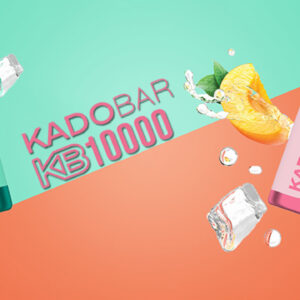
Designing a dream kitchen always comes down to the details, and countertops are one of the biggest style statements you can make. The surface you pick sets the tone for the whole space. These days, many homeowners lean toward quartz and quartzite because both are durable, stylish, and long-lasting.
But here’s the thing—when you start comparing options, the price range can feel confusing. Some slabs look similar but cost double. Others look simple yet still land on the higher end. That’s why knowing what affects quartz price and the cost of quartzite countertops makes a huge difference when budgeting for a remodel.
This guide breaks down the main factors that shape costs, compares quartz with quartzite, and shares a few tips for stretching your budget while still getting a high-quality surface.
Why Countertop Costs Aren’t All the Same
Not every kitchen surface is priced alike. Some are affordable because the material is common and easy to work with. Others shoot up in cost because of sourcing, design, or labor. The main things that drive the final price include:
- Type of material (quartz, quartzite, granite, marble, etc.)
- Where it’s sourced and how available it is
- The work involved in fabrication and installation
- Edge styles and finishes
- Thickness and overall slab size
- Brand and supplier reputation
Each one adds or reduces costs per square foot. Let’s dive a little deeper.
Quartz Price: What Affects It
Quartz is man-made, built from crushed quartz crystals mixed with resin. It’s strong, comes in tons of colors, and is almost effortless to care for. The quartz price usually lands in the mid-to-high range, but several factors push it up or down.
- Brand and Manufacturer
Well-known names like Cambria, Caesarstone, or Silestone often come with higher price tags. Their reputation, warranties, and design options drive the increase. Smaller brands can be easier on the wallet, though they may offer fewer styles. - Color and Pattern
Basic shades like plain white or light gray are usually cheaper. But if you want slabs with dramatic veining or marble-like designs, the quartz price can go way up. Unique finishes almost always cost more. - Thickness of the Slab
Most slabs are 2 cm or 3 cm thick. Thicker slabs are more expensive since they use more material and need stronger support during installation. - Edge Profiles
A simple straight edge keeps costs low. Once you start adding decorative styles like ogee or bullnose, fabrication takes longer, which adds to the price. - Installation Complexity
A simple L-shaped counter costs less to install than a large island with multiple cutouts or curves. The more complicated the layout, the higher the bill.
Cost of Quartzite Countertops: Why It’s Higher
Quartzite is natural stone, created deep in the earth under heat and pressure. It’s tough like granite but has the look of marble. Because it’s natural and harder to work with, the cost of quartzite countertops is almost always higher than quartz.
- Rarity of the Stone
Quartzite is less common, which drives its price up. Unique types like White Macaubas or Taj Mahal are especially expensive because they’re harder to source. - Quarrying and Transport
Quartzite usually comes from limited locations. Transport and shipping costs add a lot to the overall price, especially if the stone is imported. - Slab Quality and Size
Large, clean slabs with no imperfections are highly valued. They’re preferred in big kitchens because they reduce seams. But those flawless slabs carry a premium price. - Fabrication Difficulty
Quartzite is harder than granite. Cutting, shaping, and finishing it takes more labor and specialized tools. That extra effort shows up in the final bill. - Maintenance Needs
Quartz is nearly maintenance-free. Quartzite, on the other hand, needs sealing to protect against stains. Over time, this adds a small ongoing cost that homeowners consider.
Quartz vs. Quartzite: Side-by-Side Price
To make things clear, here’s a quick look at how the two usually compare in the U.S.:
| Material | Average Cost (per sq. ft.) | Maintenance | Durability |
| Quartz | $50 – $120 | Low | Very High |
| Quartzite | $70 – $200+ | Moderate | Extremely High |
Quartz is usually more budget-friendly and consistent in pricing. Quartzite, while stunning and unique, typically lands in the luxury range because of its natural beauty and durability.
Other Things That Push Countertop Costs Up
Aside from the material itself, several extras can change the final cost:
- Kitchen size and layout – Larger kitchens need more slabs. Complicated shapes or islands add to labor.
- Removing old countertops – Tearing out old surfaces before installation comes with added labor charges.
- Custom features – Designs like integrated sinks, waterfall edges, or book-matched slabs quickly raise costs.
- Location – Labor rates vary by city. Urban installs tend to cost more than rural ones.
Tips to Manage Quartz and Quartzite Costs
Want high-end countertops without draining your budget? Here are some smart ways to save:
- Compare quartz price and quartzite costs at different showrooms before choosing.
- Look into remnant slabs for islands or small projects.
- Stick with simple edge designs to cut fabrication time.
- Consider thinner slabs. A 2 cm slab with an edge build-up can mimic a thicker one.
- Check local stone suppliers. Locally sourced quartzite may cost less than imported options.
Final Thoughts
Countertops are one of the most noticeable features in a kitchen remodel. The quartz price and cost of quartzite countertops depend on a mix of factors—brand, slab thickness, edge style, fabrication, and installation details.
Quartz often wins as the practical pick. It’s consistent, easy to care for, and usually costs less overall. Quartzite, however, appeals to those who want the natural beauty of stone and don’t mind paying more for a unique surface.
If you weigh these factors carefully, you can strike the right balance between budget and style while still enjoying a stunning kitchen upgrade.
FAQs
Q1: Is quartz cheaper than quartzite?
Yes, in most cases quartz is more affordable. Quartzite is natural and harder to work with, which usually makes it more expensive.
Q2: How much does quartzite cost compared to quartz?
On average, quartz ranges from $50–$120 per sq. ft., while quartzite starts around $70 and can go beyond $200 per sq. ft.
Q3: Do quartzite countertops need sealing?
Yes. Quartzite should be sealed every so often to prevent stains. Quartz, in contrast, is almost maintenance-free.
Q4: What’s the most budget-friendly way to get quartz or quartzite?
Look into remnants, stick with simple edges, and compare multiple suppliers before buying.
Q5: Which is better for families with kids—quartz or quartzite?
Quartz is usually better for busy households. It’s durable, consistent in color, and doesn’t need much maintenance.




